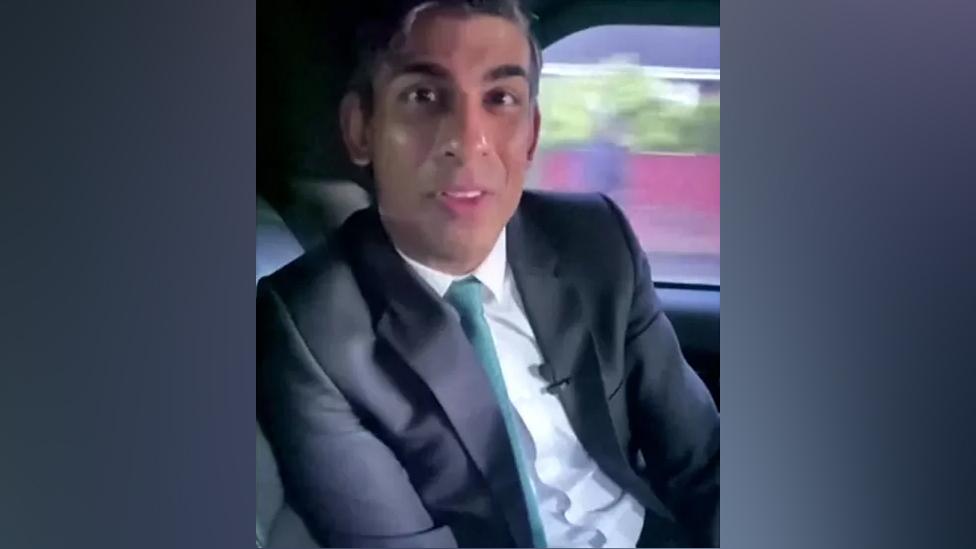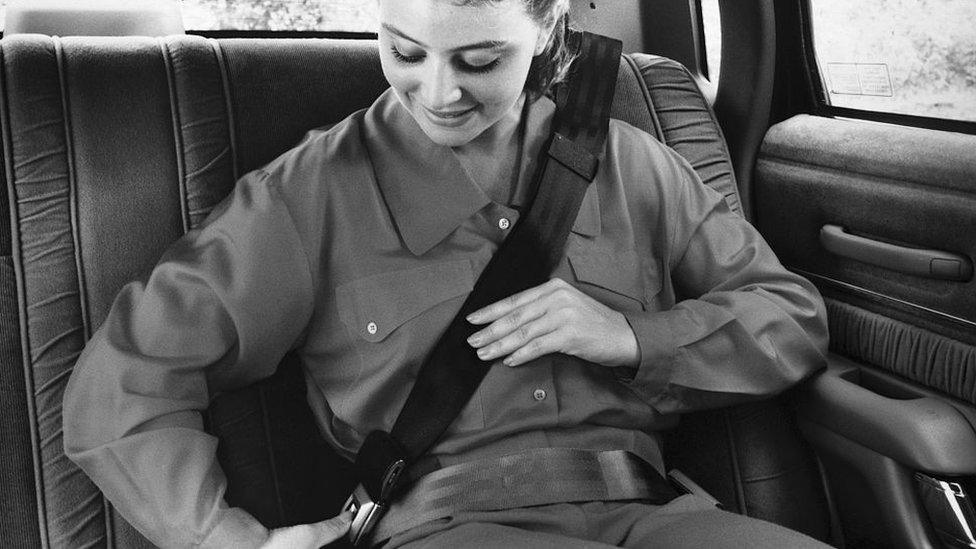Seat belt law: What are the rules?
- Published
- comments

The prime minister was filming a video promoting the government's levelling up policy
The Prime Minister has been given a fine by police for not wearing a seat belt while sitting in the backseat of a moving car.
A fine is a sum of money requested as a penalty or punishment. Lancashire police issued the fine because in the UK it is the law to wear a seat belt.
Rishi Sunak has apologised and said it was a bad decision to take it off when he was filming a social media clip.
A spokesman for the Prime Minister told reporters Rishi Sunak "believes everyone should wear a seat belt".
What are the seatbelt rules?

The driver is responsible for making sure a child under the age of 14 is wearing a seat belt
By law, all drivers and passengers must wear a seat belt while travelling in a car, van or other vehicles whether they are sitting in the front of the car or as a passenger in the back seat.
The person driving is responsible for making sure children under the age of 14 are wearing one.
For passengers aged 14 and over it is their own responsibility to wear a seat belt.
Passengers caught failing to wear a seat belt when one is available, unless they have a special reason not to, can be asked to pay a £100 fine.
The fine can increase to £500 if the case goes to court.
If a child under the age of 14 is caught not wearing a seat belt, the driver would have to pay the the money.
Reasons people may not get in trouble include having a medical reason for not wearing a seat belt and being in a vehicle used for a police, fire or other rescue service.
Public buses that travel on urban roads and have standing passengers do not have to follow the seat belt rules because they only travel on slower roads.
If you cannot see where to take the quiz, then click here.
The Royal Society for the Prevention of Accidents (RoSPA) who campaigned for seat belts to be required by law nearly 40 years ago said:
"Everyone should take seatbelt laws seriously - whoever and wherever they are."
Who invented the seat belt?

The three point seat belt which goes across your body and your lap was invented in 1959
The three-point seat belt that we use today was invented in 1959 by an engineer called Nils Bohlin at the car manufacturer Volvo.
It is in all cars now because although the car manufacturer could have charged other companies to use their design, they decided it was too important not to share.
A patent for an invention can be given to an inventor to stop others from making or selling or using their invention unless they are given permission.
But Volvo opened up the patent so that any car manufacturer could use the design.
The three-point seat belt is estimated to have saved more than a million lives worldwide.
